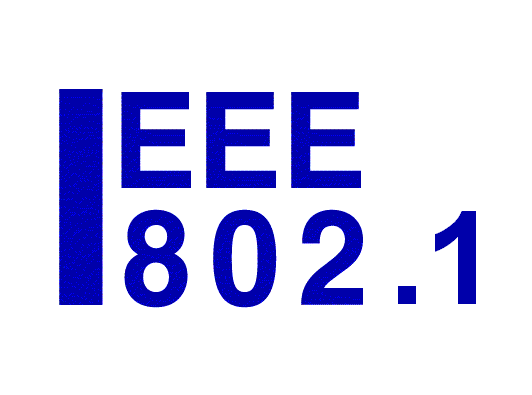Addressing and Data Center Bridging (DCB)
This Task Group is not active at the moment. The addressing work is conducted in the OmniRAN TG and the data center bridging work is conducted in the TSN TG.
The Addressing and Data Center Bridging (DCB) Task Group (TG) was a part of the IEEE 802.1 Working Group. For general information, please refer to the 802.1 home page.
The Addressing and DCB task group has a charter covering two areas: Addressing and Data Center Bridging.
The current work on Addressing is to develop protocols for distributing local and multicast MAC addresses.
The charter for DCB is to provide enhancements to existing 802.1 bridge specifications to satisfy the requirements of protocols and applications in the data center. Previously high-performance data centers typically comprised multiple application-specific networks that run on different link layer technologies; e.g. Fibre Channel for storage, InfiniBand for high-performance computing, Ethernet for network management and LAN connectivity. The first set of specifications from this TG enabled 802.1 bridges to be used for the deployment of a converged network where all applications can be run over a single physical infrastructure.
- Congestion Notification (CN) provides end to end congestion management for protocols that do not already have congestion control mechanisms built in; e.g. Fibre Channel over Ethernet (FCoE). It is also expected to benefit protocols such as TCP that do have native congestion management as it reacts to congestion in a more timely manner.
- Priority-based Flow Control (PFC) provides a link level flow control mechanism that can be controlled independently for each priority. The goal of this mechanism is to ensure zero loss due to congestion in DCB networks.
- Enhanced Transmission Selection (ETS) provides a common management framework for assignment of bandwidth to traffic classes.
- A discovery and capability exchange protocol that is used for conveying capabilities and configuration of the above features between neighbors to ensure consistent configuration across the network. This protocol is expected to leverage functionality provided by IEEE 802.1AB (LLDP).
Next, the DCB TG worked to address the impact of of server virtualization technology on bridged networks through specifications for Edge Virtual Bridging (EVB) and Port Extenders.
Active projects
- P802.1CQ: Standard for Local and Metropolitan Area Networks: Multicast and Local Address Assignment [PAR, 5 Criteria]
- P802.1Qcy: Bridges and Bridged Networks – Amendment: Virtual Station Interface (VSI) Discovery and Configuration Protocol (VDP) Extension to Support Network Virtualization Overlays Over Layer 3 (NVO3). [PAR, 5 Criteria] Note: The PAR number was changed to P802.1Qcy from P802.1Qcn because of confusion with QCN (Quantized Congestion Notification) in P802.1Q.
Completed projects
- 802.1Qcd: IEEE Standard for Local and Metropolitan Area Networks: Bridges and Bridged Networks – Amendment 23: Application Virtual Local Area Network (VLAN) Type, Length, Value (TLV). [PAR, 5 Criteria]
- 802.1Qau: IEEE Standard for Local and Metropolitan Area Networks: Virtual Bridged Local Area Networks – Amendment 10: Congestion Notification. [PAR, 5 Criteria, Schedule]
- 802.1Qaz: IEEE Standard for Local and Metropolitan Area Networks: Virtual Bridged Local Area Networks – Amendment 18: Enhanced Transmission Selection. [PAR, 5 Criteria, Schedule]
- 802.1Qbb: IEEE Standard for Local and Metropolitan Area Networks: Virtual Bridged Local Area Networks – Amendment 17: Priority-based Flow Control. [PAR, 5 Criteria, Schedule]
- 802.3bd: IEEE Standard for Information technology – Telecommunications and information exchange between systems – Local and metropolitan area networks – Specific requirements: Part 3: Carrier Sense Multiple Access with Collision Detection (CSMA/CD) Access Method and Physical Layer Specifications – Amendment 8: MAC Control Frame for Priority-based Flow Control. [PAR]
- 802.1Qbg: IEEE Standard for Local and Metropolitan Area Networks: Virtual Bridged Local Area Networks – Amendment 21: Edge Virtual Bridging. [PAR, 5 Criteria]
- 802.1BR: IEEE Standard for Local and Metropolitan Area Networks: Bridge Port Extension. [PAR, 5 Criteria]
- 802c: IEEE Standard for Local and Metropolitan Area Networks:Overview and Architecture–Amendment 2: Local Medium Access Control (MAC) Address Usage [PAR, 5 Criteria]
Withdrawn projects
- P802.1Qbh: IEEE Standard for Local and Metropolitan Area Networks: Virtual Bridged Local Area Networks – Amendment: Bridge Port Extension. [PAR, 5 Criteria] Replaced by 802.1BR.
Conference calls
There are currently no regularly scheduled conference calls. Information about any calls will be posted to the 802.1 reflector.
In case a call is held, participants will be required to review the IEEE patent policy prior to the meeting. If you have any questions, please contact Pat Thaler, the DCB TG chair.
